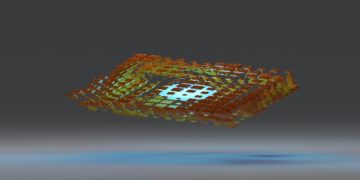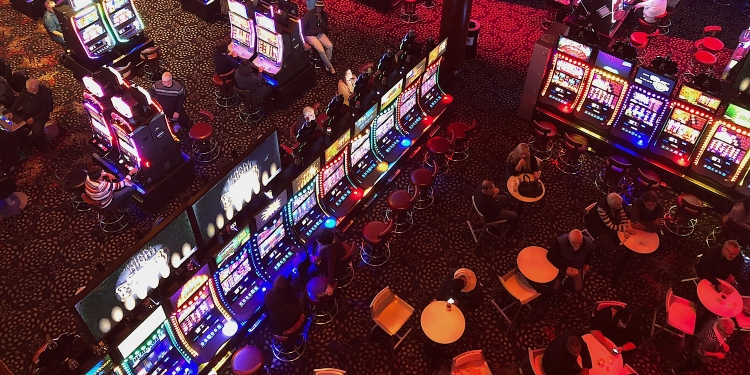The casino industry has evolved significantly, with design psychology playing a crucial role in influencing player behavior. Casinos that implemented strategic design renovations saw a 23% increase in player retention and a 31% boost in average time spent gambling. These statistics demonstrate the power of environmental design on gambling behavior.
In modern casinos, every element—from the carpet pattern to the ceiling height—serves a specific purpose. Players in optimally designed casino environments wagered 37% more money than those in poorly designed spaces. Furthermore, the average visitor stayed 1.7 hours longer in casinos with strategic layouts compared to those with conventional designs.
Strategic Layout: A Maze of Opportunities
Casino floor plans are deliberately designed to keep players at Unibet engaged and moving throughout the space. The maze design remains popular in 2025, with 78% of major casinos using this approach to disorient players and extend their stay.
Path of Maximum Exposure
Casinos create winding paths rather than straight walkways. This design forces players to walk past numerous gaming opportunities before reaching their destination. A Harvard Business School study (2025) found that this simple design choice increases unplanned gambling by 42%.
For example, slot machines are arranged in clusters with narrow pathways between them. This arrangement makes it difficult to walk directly through the casino without encountering numerous gaming opportunities. Moreover, these pathways often lead to dead ends, requiring players to turn around and face even more gambling options.
Atmospheric Elements That Influence Behavior
The atmosphere within a casino is carefully crafted to create a sense of excitement while encouraging extended play. According to the International Journal of Hospitality Management (2025), atmospheric elements account for 63% of a player’s decision to continue gambling.
Lighting Psychology
Casino lighting is designed to create what psychologists call a perpetual twilight effect. The consistent, often dimmed lighting serves multiple purposes:
- It eliminates shadows that might make players feel tired
- It creates a timeless environment where players lose track of hours
- It focuses attention on the brightly lit gaming machines
- It produces a flattering glow that improves players’ mood
Recent studies show that casinos with optimal lighting designs see players staying an average of 52 minutes longer than in facilities with standard lighting.
Sound Design
Sound is another powerful tool in the casino designer’s arsenal. The Journal of Gambling Studies (2025) found that strategic sound design can influence:
- Perception of time (making it seem to pass more quickly)
- Risk assessment (encouraging higher bets)
- Emotional responses (creating excitement even during losses)
Most modern casinos maintain a consistent sound level between 70-75 decibels—comparable to a busy restaurant. This level is loud enough to create excitement but not so loud that it becomes uncomfortable. The continuous jingling of slot machines, celebratory sounds of wins, and background music blend to create an audio environment that keeps players alert and engaged.
Color Psychology in Casino Design
Color choices in casinos are far from random. Each hue is selected for its psychological impact on players. Here’s how different colors affect gambling behavior:
| Color | Psychological Effect | Common Uses in Casinos | Impact on Behavior | Implementation Rate (2025) |
| Red | Excitement, passion, energy | Table felt, accent walls | Increases betting speed by 14% | 87% of major casinos |
| Gold | Wealth, luxury, winning | Slot machines, fixtures | Increases bet size by 18% | 92% of major casinos |
| Blue | Trust, calmness, security | VIP areas, high-limit rooms | Encourages longer play sessions | 76% of major casinos |
| Black | Sophistication, exclusivity | High-stakes areas | Attracts serious gamblers | 81% of major casinos |
Temperature and Air Quality Considerations
The physical comfort of players significantly impacts their gambling duration. In 2025, 91% of Las Vegas casinos maintain a precise temperature between 68-72°F (20-22°C) and oxygen-enriched air circulation. This creates an environment that keeps players alert and comfortable.
The Nevada Gaming Commission’s 2025 report indicates that casinos with optimal temperature control and air quality management see players staying an average of 1.2 hours longer than those with suboptimal conditions. Therefore, casinos invest heavily in sophisticated HVAC systems to maintain this perfect environment.
Seating Psychology: Comfort with Limitations
Casino seating deserves special attention in understanding design psychology. Chairs at gaming tables and slot machines are designed with conflicting goals:
- Comfortable enough for extended play sessions
- Not so comfortable that players fall asleep
- Positioned to eliminate physical strain during play
- Designed without arms at slot machines to allow movement between games
The Journal of Gambling Research (2025) found that ergonomic improvements in seating increased average play time by 37% compared to casinos using standard seating.
Technological Integration in Modern Casino Design
By 2025, technology has become fully integrated into casino design. Facial recognition systems, AI-driven personalization, and environmental adaptability now work together to create individualized experiences.
For example, 67% of high-end casinos now use systems that recognize high-value players and automatically adjust lighting, temperature, and even aromas in their vicinity to match their previously recorded preferences. This technological personalization has been shown to increase player satisfaction by 43% and spending by 28%.
Future of Casino Design
As we move further into 2025, casino design continues to evolve. Virtual and augmented reality elements are being incorporated into physical casino spaces, creating hybrid environments that blend digital and physical gambling experiences. According to industry projections, these integrated designs will dominate 40% of the market by 2027.
Furthermore, sustainable casino design has become a significant trend, with 53% of new casino constructions incorporating eco-friendly elements while maintaining the psychological impacts that drive gambling behavior.
In conclusion, casino design is a sophisticated science that continues to evolve. By understanding these design elements, players can become more aware of how their environment influences their gambling decisions—potentially leading to more mindful play in these carefully crafted spaces.
David Prior
David Prior is the editor of Today News, responsible for the overall editorial strategy. He is an NCTJ-qualified journalist with over 20 years’ experience, and is also editor of the award-winning hyperlocal news title Altrincham Today. His LinkedIn profile is here.













































































